Draining and Flushing a Water Heater
Follow these steps carefully when you need to empty a tank-style water heater to maintain, repair, or replace it.
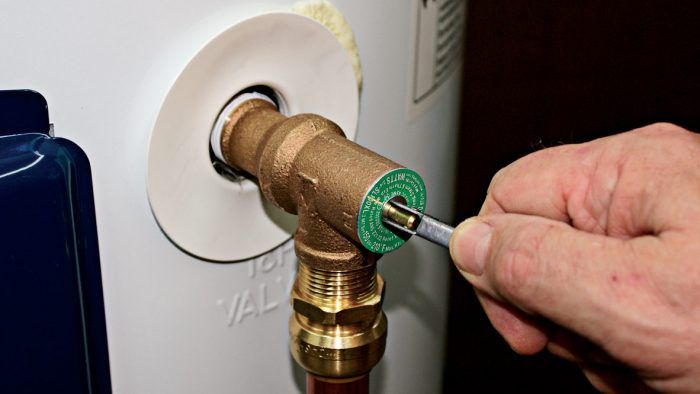
Whenever you need to change an element in an electric heater, leave the heater unused over a freezing winter, or when the heater needs cleaning, you’ll need to drain it. You’ll also need to drain it if it needs to be replaced. To drain a heater, you must open both its drain valve and the temperature and pressure-relief (T&P) valve or a hot water faucet in the house to break the vacuum the water will pull as it drains. Without breaking the vacuum, some water will always stay in the heater.
LEAK CAUSES & CURES
| WARNING: If there is a blockage (mud or iron deposits, for example), preventing the water from draining out the valve, you must unscrew the drain valve and stick in a screwdriver to punch a hole in the blockage. However, once done, the area around the heater will immediately flood with muddy water, so you’ll need to prepare yourself for some cleanup. |
Before draining an electric water heater, turn off the electric power at a cutoff switch near the heater or at the circuit breaker or fuse panel. Throw the breaker (typically a 30-amp or 20-amp double pole) to the off position or remove both heater fuses 1. For a gas heater, follow the manufacturer’s shut-down procedures printed on the side of the tank. To keep water from coming back into the heater, turn the main supply valve off, too, normally at the valve on the cold side of the heater 2.
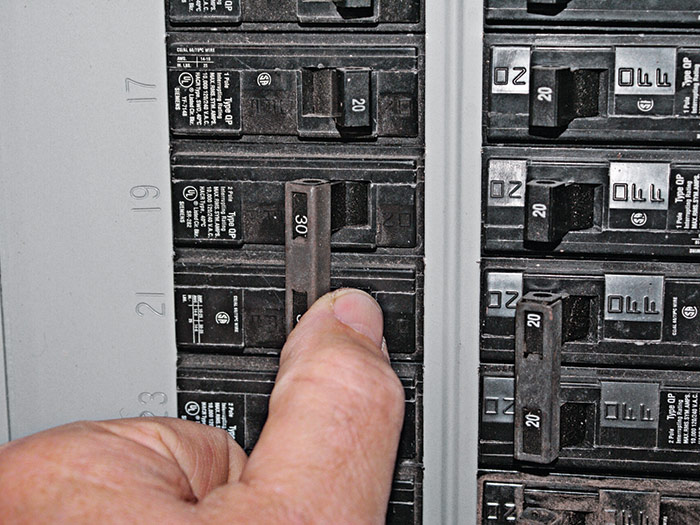

Attach a garden hose to the drain valve on the bottom of the heater and pull the opposite end of the hose outside the house or push it into a floor drain 3. The hose end must be level with or below the bottom of the heater to allow all the water to drain out.
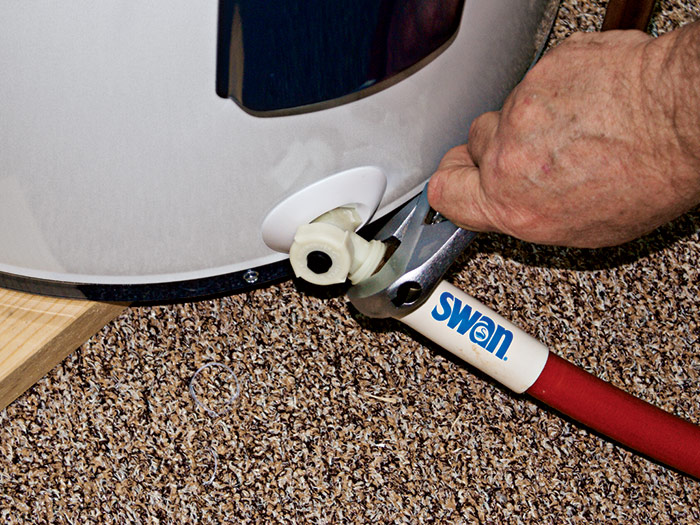
| TRADE SECRETS: Hard water can build scale that reaches the bottom element in just a few months. If you don’t drain the heater, the element will be covered by the scale and burn up. |
Open the T&P valve by lifting the lever or turn on a hot water faucet anywhere in the house 4. Then open the drain valve 5. Let the heater drain completely, then close the drain valve and the T&P valve. When refilling, to make sure the air gets purged from the tank so it can fill completely, open a hot water faucet in the house (if you haven’t already done so), and turn the faucet off when water begins to flow from it. Then turn off the water coming into the heater. Reapply the power to the heater.
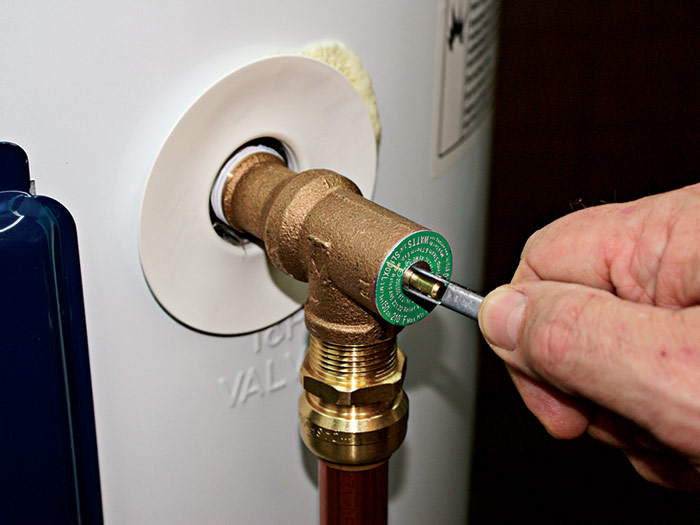
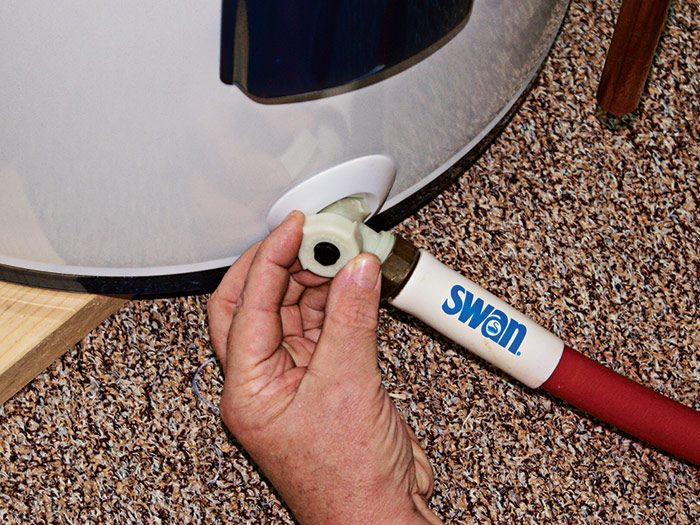
To flush a water heater, first drain the heater. Leave the hose attached to the drain. Then turn the water heater valve back on in spurts (full on for a few seconds and then off) to dislodge as much debris as possible in the tank bottom. Do this at least a dozen times. Observe the drain hose end for muddy water and debris. Refill the heater when the hose runs clear.
 Excerpted from Taunton’s Plumbing Complete by Rex Cauldwell.
Excerpted from Taunton’s Plumbing Complete by Rex Cauldwell.
Available at Amazon.com.






